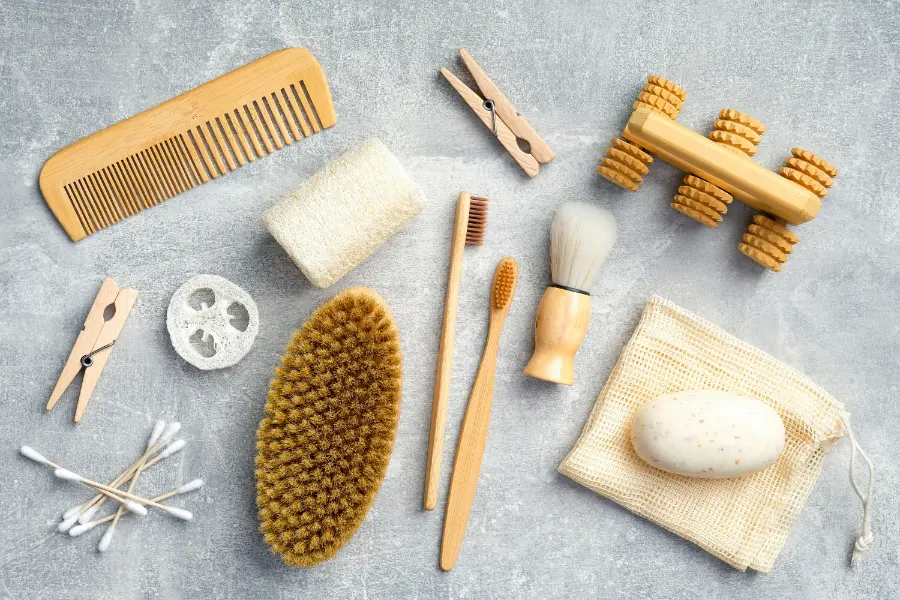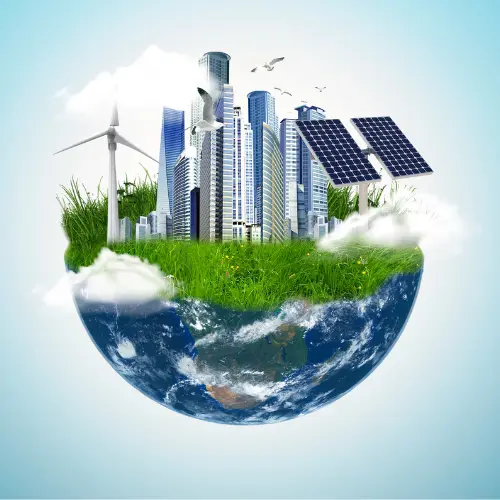As pressing environmental issues like global warming and climate change make daily headlines, manufacturers and consumers alike are doing their part to address these growing concerns. For instance, the global marketplace is evolving such that goods made from eco-friendly materials are not only becoming increasingly popular but also very much in vogue.
One resource that is taking the world by storm is bamboo, which is being used to manufacture a wide and diverse offering of products, ranging from toothbrushes to kitchen cutlery to home flooring. But with the proliferation of goods made from bamboo, a key question in keeping with the all-too-important theme of eco-friendliness is how they can be recycled. This topic and more are explored in this article, so read on to learn how to recycle bamboo products and whether they truly are environmentally friendly.
How Do I Recycle Bamboo Products?
Answering the question of how to recycle bamboo products requires a basic understanding of bamboo itself.
Although in its most commonly used form, bamboo has the look and even the feel of wood and is often (but mistakenly) referred to as a bamboo tree, it is actually a type of grass. As such, bamboo has unique attributes that set it apart from wood, including its incredible versatility.
The list of products that are produced from bamboo is one that continues to get longer as more manufacturers embrace its many benefits, not the least of which is its impressive ecological resume. Here is a sampling of popular goods that are made from bamboo:
- Personal care products
- Utensils
- Tableware
- Paper products
- Furniture
- Flooring
- Construction equipment
- Clothing and textiles
There are three primary ways that bamboo products can be recycled. Namely:
- They can be composted
- Bamboo products can be commercially recycled
- They can be repurposed
Each of these methods of recycling bamboo products deserves a closer look, starting with composting.
Composting Bamboo Products
For products made from natural materials, composting can be viewed as the ultimate form of recycling. In the case of bamboo, which sprouts from the ground at rates that are unmatched in nature, returning this amazing plant through composting back to the soil from which it sprang is an ecological success story.
Among the most popular items made from bamboo today are toothbrushes and hairbrushes. And in contrast to the overwhelming majority of toothbrushes and hairbrushes that are made from plastics and wind up in landfills, bamboo versions are typically biodegradable and perfectly suited for composting. This process usually consists of these simple steps:
- Step One – most bamboo toothbrushes and hairbrushes have non-natural bristles which cannot be composted and must therefore be removed (if they do have natural bristles, this step can be disregarded). Remove the bristles by using a pair of pliers to grab a small bunch of bristles at a time and pull them out with a twisting motion. You will find this process does the trick quite nicely.
- Step Two – the bristle-less toothbrush or hairbrush can now be safely placed in a composting bin where it will decompose with the other organic material. Breaking these items into smaller pieces can speed the process along.
According to some manufacturers of bamboo toothbrushes, their products will completely degrade in soil within six months. Other popular bamboo products, such as plates, cups, straws, and cutlery, can also be composted so long as they are biodegradable.
Recycling Bamboo Products
While composting is the ideal outcome for bamboo products from an ecological perspective, not all goods made from bamboo are suitable for the composting bin. Certain bamboo items degrade relatively quickly, while others are best dealt with through alternative means.
So long as man-made components are removed beforehand, bamboo products can be placed in green waste bins provided that they are natural or organic. That said, it is always a good idea to consult with local recycling agencies or sanitation services before doing so to ensure compliance with local recycling practices or regulations.
There are also commercial recycling options for certain bamboo products that can be coordinated through local agencies or companies. Some community disposal services encourage placing items in curbside bins like bamboo:
- Toothbrushes
- Hairbrushes
- Scrubbers
- Utensils
Not all Bamboo Products Can Be Composted or Recycled
Before putting that worn bamboo hairbrush into the composting pile or throwing that old bamboo cutting board into the green waste recycling bin, it is important to know the nature and composition of the bamboo product in question because it may contain materials that cannot be composted or recycled.
The reality of how bamboo products are manufactured today is that some of them are assembled with various types of adhesives or treated with water-proofing sealants and other chemicals like paints or finishes. Other bamboo products like cups and plates are sometimes made with melamine, which is a commonly used binding agent that gives products shape and rigidity but is by no means recyclable.
Therefore, reading the literature accompanying bamboo products or consulting the manufacturer’s website for information regarding the recyclability of their particular bamboo product is the most prudent course of action. The fact is that many companies proudly tout the fact that their products are recyclable, and they are not shy about sharing information about how to go about recycling them.
Repurposing Bamboo Products
In some cases, the best and most environmentally friendly way to recycle bamboo products is by repurposing them and giving them new life in a different role. Even with the various bamboo recycling options that are available, a simple pivot in terms of application can take the least amount of effort but yield the greatest degree of utilization.
Hare a few ideas worth considering for repurposing bamboo products:
- A bamboo toothbrush that is too worn to brush teeth with can still be used for cleaning those tough-to-reach spots in the kitchen or bathroom (e.g., grout lines or around sink handles and faucets).
- Old bamboo cutting boards (especially thicker ones) can be sanded down and resurfaced with a food-safe sealant for renewed life or repurposed altogether as a small shelf, a lap desk, or even a place to put a coffee mug when working outside.
- Bamboo clothing that is no longer fit to wear or woven bamboo products like towels or curtains that are past their prime can still be repurposed into cleaning rags, drop cloths, or even picnic blankets.
These are but a few examples of how bamboo products can be repurposed in ways that still take advantage of the material’s natural strength and durability.
Are Bamboo Products Environmentally Friendly?
The number and diversity of products that are manufactured from bamboo continue to expand at a dynamic pace, which is a testament to the versatility and adaptability of bamboo to a wide range of applications. But what is truly driving the popularity of bamboo products in the eyes of consumers and even manufacturers is its appealing attributes from an environmental perspective.
Bamboo products are without question environmentally friendly, particularly when considering:
- How bamboo is grown and cultivated
- The positive impacts that bamboo has on its immediate surroundings
- The contributions of bamboo to the environment on both a regional and global scale
Some of the most eco-friendly attributes of bamboo are botanical in nature. Bamboo is actually a type of grass and not a tree. Thus, despite having the familiar appearance of wood, bamboo and the products made from it is quite unique. Here are some important characteristics of the bamboo plant that makes it such an environmentally friendly resource:
- Because it is part of the grass family, bamboo grows very quickly compared to trees, with certain species sprouting an astonishing three feet in a 24- hour period. What growth bamboo can achieve in several months, popular trees used for wood would require decades to accomplish.
- Bamboo contains natural antibacterial agents within its fibers, which not only make bamboo the perfect material for food-contact items like cutlery, plates, and cutting boards but also eliminate the need for environmentally unfriendly pesticides and chemicals during its growth and cultivation.
- Bamboo forests absorb twice the amount of carbon dioxide from the environment compared to trees (thus serving as vital carbon sinks) while also contributing upwards of 30% more oxygen than trees and plants, thereby taking on two crucial functions in the fight against climate change and global warming.
Because of its incredibly rapid growth rate and naturally hardy nature, bamboo is almost the living definition of a renewable resource. In fact, bamboo can regenerate itself, growing new leaves and shoots from cut stalks. This eliminates the need for yearly replanting or reforestation.
The eco-friendly aspects of bamboo also extend beneath the surface of the ground, where its environmental benefits may be difficult to quantify or measure but are surely felt and appreciated. These include:
- Despite being a tall form of grass, bamboo forms a vast, dense network of roots underground, and this helps keep soil and geological features intact while preventing erosion, particularly the topsoil.
- The same root system that prevents soil erosion also acts as a water barrier, protecting precious crop-growing regions from the devastating effects of rising water tables and periodic flooding.
- Lastly, bamboo’s extensive root system also acts as an effective and natural filtration system that efficiently removes certain organic matter from the soil. So effective are bamboo’s roots at filtering substances such as nitrogen that they are being studied for possibly treating wastewater.
Overall, the scales tip heavily in favor of bamboo being an environmentally friendly resource with which to manufacture a wide range of goods. But as with many things in life, there are exceptions. And one glaring blemish on bamboo’s otherwise sparkling environmental resume is the category of fabrics and textiles.
Are Bamboo Fabrics and Textiles Environmentally Friendly?
Where the appeal of bamboo as a renewable and sustainable resource gets somewhat diminished is in the context of so-called bamboo fabrics and textiles. Bamboo in its natural form consists of long cylindrical stalks that are extremely rigid and very fibrous. There are two primary methods for harvesting the fibers from bamboo shoots for use in producing textiles:
- Mechanical processing – utilizing mechanical techniques similar to those used to produce flax or hemp textiles, this method yields a rough fabric known as bamboo linen which has yet to catch on in terms of popularity because it is a labor-intensive process and very expensive to produce.
- Chemical processing – this is by far the most common method for transforming bamboo fibers into usable textiles and relies heavily on the use of chemicals such as sodium hydroxide (aka lye), carbon disulfide, and sulfuric acid to achieve a fabric that is soft and pliable. The resulting material is well-suited for manufacturing a wide range of clothing and other woven goods.
It is the latter and more prevalent chemical processing method that gives environmentalists and regulators pause when considering the environmental impact of bamboo textiles.
First and foremost is the use of chemicals that are known to have toxic attributes with debilitating health effects on those who have prolonged exposure, like factory workers. In fact, processing methods based on the use of carbon disulfide are prohibited in the United States.
These same chemicals that pose serious dangers to the health of industry workers also represent devastating threats to the environment. Reportedly half of the chemicals used in processes like those utilized to convert bamboo into functional fabrics are not captured, meaning that they are released into the environment in harmful ways, including:
- Gases and compounds including chlorine and VOCs (Volatile Organic Compounds) from the chemicals used to process bamboo into textiles are released into the atmosphere, where they contribute to worsening global warming and climate change
- Chemical by-products and waste materials either escape from facilities or are purposely dumped into surrounding waterways leading to increased toxicity and devastation of aquatic life
While there are instances of closed-loop operations that minimize the harmful health and environmental effects of modern bamboo textile processing, they are far from the norm. Until such time when the collateral costs of bamboo as a resource for clothing and other woven goods are drastically reduced, if not eliminated altogether, it cannot be declared as an eco-friendly material for such products.
Conclusion
As demand grows for environmentally-friendly products made from renewable and sustainable materials, bamboo has emerged as a promising resource. With its astonishing growth rate and minimal requirements for cultivation, bamboo’s potential as a versatile and multi-functional raw material seems limitless.
And if recycling technologies continue to develop to allow for the greater conversion of used bamboo products into reusable resources, then like the towering bamboo forests themselves, the sky is the limit.
SOURCES:
- https://www.goodstartpackaging.com/guide-to-bamboo-packaging/
- https://www.jlhonest.com/blogs/news/how-to-dispose-of-a-bamboo-toothbrush-properly-no-waste
- https://goodwell.co/pages/faq
- https://jungleculture.eco/blogs/news/can-bamboo-cutlery-be-recycled
- https://www.recycleannarbor.org/a-z-recycling-guide/bamboo-products
- https://www.spectalite.com/news/melamine-bamboo-products-critisized-by-german-consumer-group/
- https://barevida.com/blogs/news/why-is-bamboo-eco-friendly
- https://onetreeplanted.org/blogs/stories/bamboo
- https://www.treehugger.com/is-bamboo-fabric-sustainable-5078509


